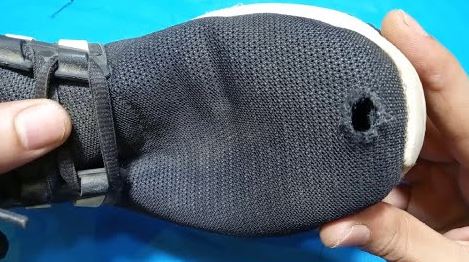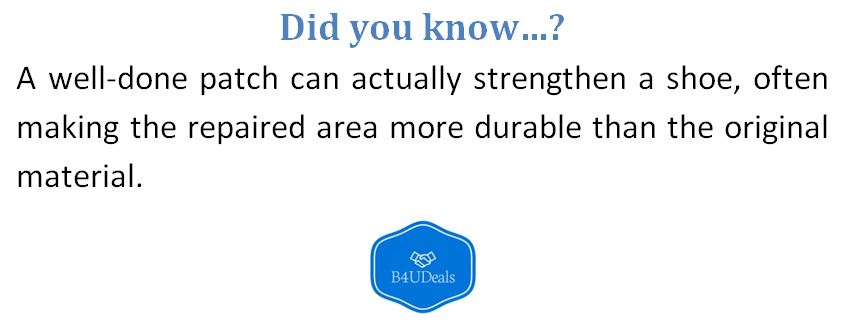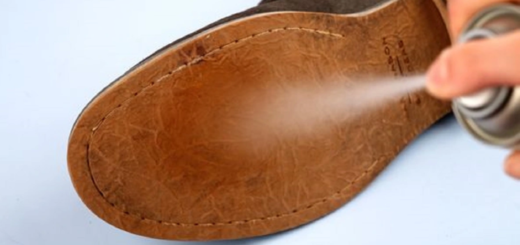Repairing Shoe Holes: Simple Solutions to Extend Footwear Life
Shoes naturally wear out over time, especially if they’re your go-to pair for daily use. Instead of tossing them out at the first sign of damage, you can repair holes and extend their usability. Fixing holes in shoes is a cost-effective and eco-friendly solution that can restore comfort and functionality with just a few tools and materials. Whether you’re dealing with damage in the sole or the upper part of the shoe, there are practical techniques to patch things up.

Sealing Damage with Adhesive Compounds
One of the most efficient ways to fix holes in shoes—especially in the sole—is by using a strong adhesive. Products like Shoe Goo, Gorilla Glue, and Liquid Nails are designed to seal gaps and create a protective barrier. These adhesives are widely available in hardware stores and online. Choose one based on the type of shoes you’re repairing and your preference for drying color or strength.
Start by removing the insole if it’s easily detachable, particularly when repairing the bottom of the shoe. This step allows you to work directly on the damaged area and prevents glue from seeping into the cushioning. If the insole is glued in place, leave it as is to avoid unnecessary damage.
To prepare the surface, apply a strip of duct tape or electrical tape on the inside of the shoe, directly over the hole. This backing will contain the adhesive as it cures and ensure it forms a solid patch. Then, squeeze the glue over the exterior part of the hole, applying enough to fully cover the damaged spot. Don’t worry if it looks messy at first—adhesives often settle into place as they cure.
Give the glue a minute or two to start drying before spreading it evenly. You can use a disposable stick or your finger to distribute the adhesive, but be cautious not to touch it for too long, as it becomes sticky and hardens quickly. Once the glue is smooth and evenly spread, leave the shoe to dry overnight. This allows the adhesive to form a durable, waterproof seal.
After the glue has set, remove the tape from inside the shoe and reinstall the insole if it was removed earlier. Press down gently on the repaired area to make sure the seal is firm. The shoe should now be water-resistant and structurally sound, ready for more wear.
Covering Holes with Fabric Patches
For holes in the upper part of shoes—especially those made from softer materials like suede or canvas—patching with fabric is an effective alternative. This method not only seals the damage but can also give your footwear a custom look.
Begin by stuffing the shoe with newspaper or old socks. Filling the shoe gives it shape and makes the repair process easier, especially when sewing or gluing fabric. Once that’s done, find a suitable fabric to use as a patch. Match the texture and color to your shoes, or choose a contrasting design for a stylish upgrade. Good patch fabrics include leather, felt, or denim, depending on the material of the shoe.
Cut the patch large enough to fully cover the hole. It’s usually better to go slightly larger to ensure full coverage and a secure fit. If the damage is on the toe, for instance, consider cutting a patch that wraps around the toe box rather than applying a tiny square.
Before attaching the patch, hold it against the shoe to check its position. Use sewing pins to hold the fabric in place temporarily. This allows you to adjust it if necessary before making anything permanent. If you’re patching both shoes for symmetry, take care to match the placement of the patches.
Use a steam iron to help the patch conform to the shoe’s shape. Drape a damp cloth over the patch and press a hot steam iron over the cloth for several seconds. This softens the patch and helps it mold to the shoe. Repeat the steaming process a few times to ensure the edges lie flat.
Once the patch is shaped to your liking, sew it into place using a needle and thread. For best results, choose thread that closely matches your shoe color. Start by stitching around the edges of the patch with small, consistent stitches. You can use a basic running stitch or more decorative stitching if you prefer a fashionable touch. Knot the thread securely at the end to prevent it from unraveling.

Tips for a Successful Repair
No matter which method you use, the key to a long-lasting repair lies in preparation and patience. Always clean the area around the hole before applying glue or sewing a patch. Remove dirt, debris, and moisture so the adhesive bonds properly or the stitches hold tightly.
If your shoes are made of leather, you may want to roughen the surface slightly with sandpaper to help the adhesive stick better. Likewise, if you’re using fabric patches, pre-wash and dry the fabric to prevent it from shrinking or warping later.
When using adhesives, make sure to follow the manufacturer’s instructions for curing times and application techniques. Rushing the process can lead to weak repairs that come undone after minimal use.

When to Consider Professional Repair
While DIY fixes work well for minor holes and cosmetic issues, more severe damage may require professional intervention. If the sole is separating from the shoe or the structural integrity is compromised, a cobbler may be able to rebuild the shoe more effectively. Many shoe repair shops offer affordable services for resoling, stitching, and waterproofing.
Repair professionals also have access to commercial-grade materials and tools that might not be available to most consumers. In some cases, professional repairs can give shoes a second life, lasting for years longer than a simple DIY patch.
Saving Money and Reducing Waste
Fixing holes in shoes is not just a matter of convenience—it’s also a sustainable choice. By repairing rather than replacing, you reduce your environmental impact and save money in the long run. The process requires only a few materials, most of which are affordable and reusable for future repairs.
Additionally, repairing shoes lets you hold on to styles you love that may no longer be available in stores. Whether it’s a favorite pair of sneakers, hiking boots, or vintage leather shoes, a little effort can make a big difference in preserving your favorite footwear.
Final Thoughts
You don’t need to be an expert to fix holes in your shoes. With the right materials and a little time, you can patch up damage and get many more miles out of your favorite pair. Whether you’re sealing a crack in the sole or covering a worn area on the upper, these simple repair methods are a practical solution to common shoe problems.







